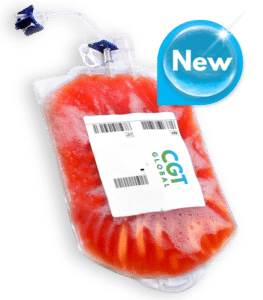THE POWER OF THE ADAPTABLE CELLS
Cord blood transplants hold promise for treating a wide range of diseases from cancer and diabetes to rare genetic disorders. Within the cord blood are blood-forming stem cells, known as hematopoietic stem cells. Transplantation of these stem cells into patients with chronic or life-threatening diseases allows regrowth or regeneration of healthy cells. Thus, cord blood stem cell transplants are a form of regenerative medicine, a branch of medicine that replaces, regrows, or repairs tissues damaged by disease, trauma, or congenital issues. Therefore, rather than treating the symptoms of a disease, regenerative medicine provides restorative, therapeutic, and even curative benefits to the patient.
Currently, cord blood transplants can already treat or cure nearly 80 diseases. As of this year, there are over 200 clinical trials worldwide investigating the use of cord blood stem cells in regenerative therapy and its effectiveness in the treatment of many blood disorders, as well as conditions, such as cerebral palsy, gestational diabetes, Alzheimer’s, Autism, and stroke. These clinical trials may lead to the approval of new and better treatments for the advancement of clinical trials and final approval by the FDA for treatment depends on the innovative research conducted at academic institutions and within the biotech and pharmaceutical industries. Donor contributions, such as the donation of cord blood, fuels the progress of this research.
Cord blood is the blood within the baby’s umbilical cord and placenta immediately after birth. It is blood that is no longer needed to support the development of the baby and, often goes into medical waste unless the mother decides to save the cord blood for public or private banking, or research purposes. The collection of cord blood is a safe, quick, and easy procedure that does not interfere with the birthing process or prevent a parent from taking the placenta home if desired. Cord blood is drawn after the baby has been born, and the umbilical cord has been clamped and cut. Cord blood is only collected upon the consent of the mother.
There are an estimated 4 million births in the United States every year, and less than 4% of parents donate their baby’s cord blood. Cord blood collection is a simple procedure with no side-effects to the mother or the baby, so why do so few parents donate? Education to new parents about the benefits of cord blood donation is critical. Cord blood donation is not a standard element of obstetrical care, and because of this, many women are unaware of their opportunity to donate their baby’s cord blood and the potential uses of donated samples.
Click here to learn more about how cords are used to accelerate life-saving research and opportunities to partner with us.






